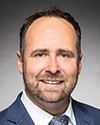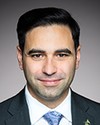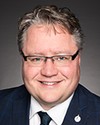I call this meeting to order.
Welcome to meeting number five of the House of Commons Standing Committee on Public Accounts. Pursuant to Standing Order 108(3)(g), the committee is meeting today to study “Report 10: Securing Personal Protective Equipment and Medical Devices” of the 2021 reports of the Auditor General of Canada.
Today's meeting is taking place in a hybrid format, pursuant to the House order of November 25, 2021. Members are attending in person in the room and remotely by using the Zoom application. The proceedings will be made available via the House of Commons website. Just so you are aware, the website will always show the person speaking rather than the entirety of the committee. I would like to take this opportunity to remind all participants at this meeting that screenshots or taking photos of your screen is not permitted.
Given the ongoing pandemic situation, and in light of the recommendations from health authorities as well as the directive of the Board of Internal Economy on October 29, 2021, to remain healthy and safe, all those attending the meeting in person are to maintain two-metre physical distancing; must wear a non-medical mask when circulating in the room, and it is highly recommended that the mask be worn at all times, including when seated; and must maintain proper hand hygiene by using the hand sanitizer provided at the room entrance. As the chair, I will be enforcing these measures for the duration of the meeting. I thank members in advance for their co-operation.
Members and witnesses may speak in the official language of their choice. Interpretation services are available for this meeting. You have the choice, at the bottom of your screen, of floor, English or French. If interpretation is lost, please inform me immediately and we will ensure that interpretation is properly restored before resuming the proceedings.
The “raise hand” feature at the bottom of the screen can be used at any time if you wish to speak or alert the chair. For members participating in person, proceed as you usually would when the whole committee is meeting in person in a committee room. Keep in mind the Board of Internal Economy's guidelines for mask use and health protocols.
Before speaking, please wait until I recognize you by name. If you are on the video conference, please click on the microphone icon to unmute yourself. For those in the room, your microphone will be controlled as normal by the proceedings and verification officer. When speaking, please speak slowly and clearly. When you are not speaking, your mike should be on mute. All comments by members and witnesses should be addressed through the chair.
With regard to a speaking list, the committee clerk and I will do the best we can to maintain a consolidated order of speaking for all members, whether they are participating virtually or in person.
I would now like to welcome our witnesses.
From the Office of the Auditor General, we have Andrew Hayes, deputy auditor general, and Jean Goulet, principal.
From Health Canada, we have Dr. Stephen Lucas, deputy minister.
From the Public Health Agency of Canada, we have Dr. Harpreet Kochhar, president, and Cindy Evans, vice-president, emergency management.
From Public Services and Procurement Canada, we have Paul Thompson, deputy minister.
You will have five minutes to make your opening statements.
I will go first to the deputy auditor general.
Mr. Hayes, you have the floor. It's so nice to see you again.










